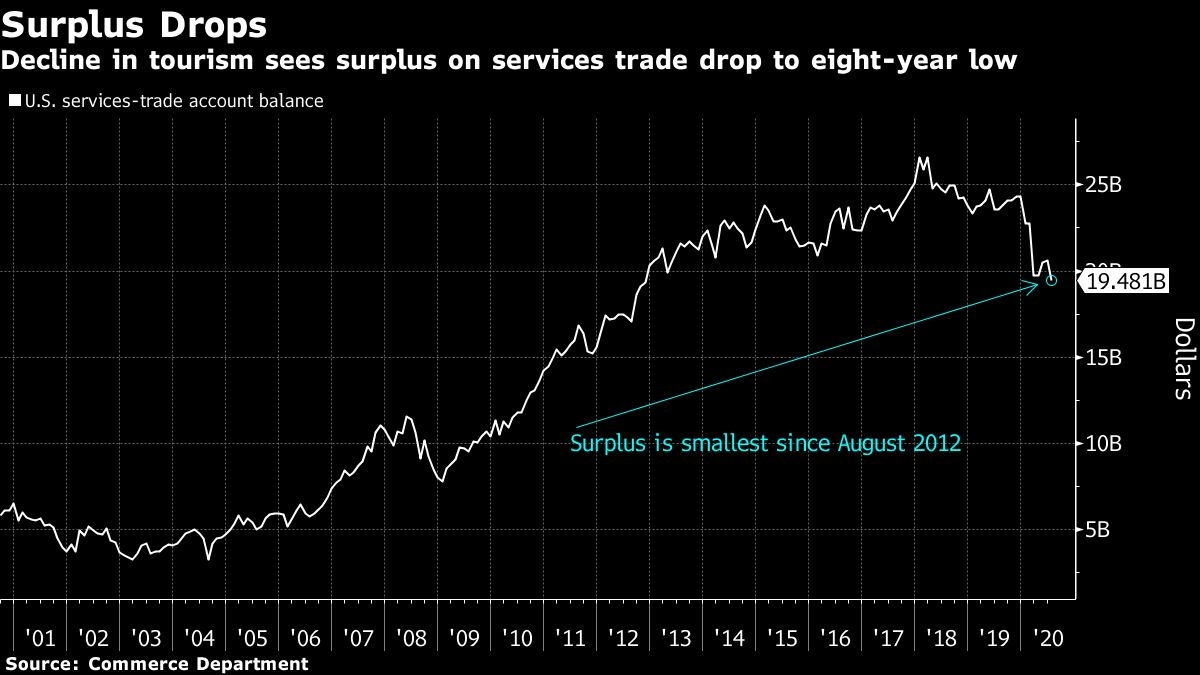Dec 4, 2020
U.S. trade gap widens as travel restrictions hit services demand
, Bloomberg News
Expect the U.S. Fed to respond to the lack of fiscal stimulus: John Wilson
The U.S. trade deficit widened in October as the value of imports climbed to just below pre-pandemic levels, while travel restrictions and consumer wariness continued to depress services exports.
The shortfall in trade of goods and services expanded to US$63.1 billion in October from a revised US$62.1 billion in September, according to Commerce Department data released Friday. That compares with a median estimate for a gap of US$64.8 billion in a Bloomberg survey of economists.

Total imports increased 2.1 per cent to US$245.1 billion, the highest since February, while exports advanced for a fifth month, climbing 2.2 per cent to US$182 billion.
The nation’s surplus in services fell 2.2 per cent to US$18.3 billion, the lowest since August 2012, while the merchandise-trade deficit increased 0.8 per cent to US$81.4 billion.
Travel Drop
The widening of the deficit reflects a virtual standstill in travel, with spending by visitors to the U.S. dropping to US$4.07 billion, more than two thirds lower than in February.
Combined, the value of U.S. exports and imports climbed to US$427.2 billion, the highest since February, but still down from US$469 billion at the end of 2019.
Before taking office in 2017, President Donald Trump had called for “eliminating America’s chronic trade deficit” and listed China, Canada, Germany, Japan and South Korea as the main culprits. The data show that gains made before the pandemic have been eroded as the outbreak upended supply chains and demand.
While Trump’s approach has resulted in trade wars with No. 1 trading partner China, President-elect Joe Biden has indicated a more global approach relating to Beijing. That said, Biden told the New York Times this week he would keep the phase-one trade deal with the Asian nation in place while he reviews U.S. policy and consults with key allies.

